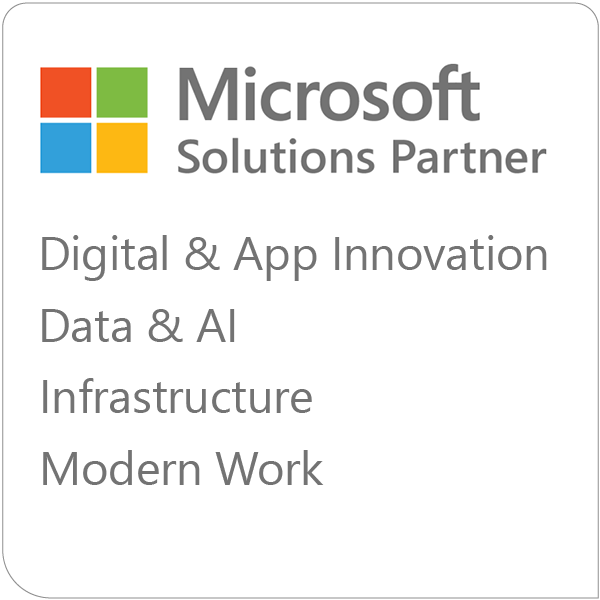In the below blog post, we cover the software development lifecycle (SDLC).
Although SDLC is not our preferred framework at Emergent Software, it is one that we are quite familiar with and have inherited several projects using this methodology. In many instances, SDLC is a fine starting point but lacks some of the core benefits of modern Agile Software Development. To learn more about our preferred approach, which uses an Agile model, check out this post on our custom software development process.
Looking for custom software development? Learn more about our services!
As the volume of enterprise data and the automation of business workflows continue to increase at a rapid pace, software development will only continue to grow. Businesses and developers must find efficient ways to minimize errors and leverage custom software solutions. The answer? Using the Software Development Life Cycle (SDLC).
We’re going to walk you through each phase of the software development life cycle process, which entails a total of seven stages:
- Requirements & Analysis
- Project Planning
- Design
- Coding & Implementation
- Testing
- Deployment
- Maintenance
By understanding each stage, you can identify efficient ways to better manage your software projects, improve the development process, save on costs, and enhance customer satisfaction.
What Is SDLC?
The software development lifecycle (SDLC) is a standardized process that IT, systems, and software engineering industries use to build and test software products. It's a step-by-step development process with the goal of creating high-quality software that meets or exceeds customer expectations.
How is SDLC used?
SDLC is a set of principles that have inspired multiple models used in modern development:

At Emergent Software, we leverage principals from the Agile and DevOps models to help you deliver high quality software that enables your business to capture market opportunities. Learn more about What to Expect When You Work with Us and how we take you From Idea to Value.
Why Is SDLC Important?
As we’ve noted above, there are seven defined stages of the SDLC framework. The seven stages give developers the opportunity to produce notable and customized software products, helping their organizations sharpen their competitive edge.
Here are a few benefits the SDLC can bring:
- Better visibility of a project plan
- Improved control and monitoring
- Project risk mitigation and error reduction
- A method of project progress tracking
- Timely delivery of high-quality software to client
Stage 1: Requirements & Analysis
This is the first and fundamental stage of SDLC. Business analysts gather requirements from their customers, target market, and industry experts to create a Business Specification (BS) document. Other organizations and teams may refer to this document as Customer Requirement Specification (CRS).
The intent of this document is to outline current pain points that developers should strive to eliminate through the power of software. It can be a useful resource to help the team discover innovative methods to change and improve their products.
The document is shared with the development team, which then uses it in the next stage.
Stage 2: Project Planning
Based on the Business Specification document, senior development team members bring together the input of stakeholders and experts to plan out a software development project. The project may be focused on building a new software product or improving a current one.
During this initial development phase, team members work together to discuss and plan out:
- Intentions behind the project
- Requirements of the project
- Anticipated issues
- Opportunities
- Risks
All of these elements are recorded in a Software Requirement Specification (SRS) document. By outlining the points above, team members can ensure they are injecting their software projects with the right focus.
Stage 3: Design
This stage focuses on designing the product. It involves product architects and developers who will ideate and present a design of the product. They may present more than one design approach, and these ideas are documented in a Design Document Specification (DDS).
The DDS will be a pivotal part of the production process (Stage 4), as developers will lean on it as their primary resource to build their code. Developers must also refer back to the SRS document (from Stage 2) to ensure the product’s design safeguards the team from the anticipated issues and risks noted earlier.
Stage 4: Coding & Implementation
In Stage 4, production commences and the product is built. The programming code is built per the DDS (Stage 3), so the product can be created with the utmost efficiency. Developers use various tools and programming languages to build the code. These are selected based on the demands of the software being developed.
Some of the programming tools may involve:
- Compilers
- Interpreters
- Debuggers
The programming languages may entail:
- C
- C++
- Pascal
- Java
- PHP
Stage 5: Testing
Stage 5 is where the development team conducts software testing to find errors and deficiencies. Does the software produce the right results? Does it fulfill the requirements and objectives initially outlined in the SDLC? These are examples of key questions that could be asked during the testing phase.
Some teams may test the software manually or use automated testing tools. Whichever route they decide to pursue, the testing process should ensure each unit of the software works well. After undergoing testing, the software should enter a QA process to validate the product’s quality.
Stage 6: Deployment
Once the software application has undergone testing and QA, it is delivered to the customer. This stage usually involves deployment engineers who make software available to customers. They may install the software at a company and/or help individual customers run the application on their computers.
Stage 7: Maintenance
Because a software product’s usage varies from customer to customer (each person has different needs), there may be unique issues that come up and need to be addressed. These customer issues are solved in this maintenance stage.
To help mitigate the amount of maintenance that needs to be done, teams may choose to first release the product to a smaller population of customers. This can offer insight into how the product is performing and the development teams can make any last adjustments prior to its final release.
Learn More from Emergent Software
Do you have an upcoming software development project or existing software that has reached its maintenance stage? An IT outsourcing partner can help you with the entire software development process. Find out more about how to work with a technology partner here.
If you’re interested in learning more about the software development life cycle (SDLC) or other software development topics, check out these blog posts on related subjects:
- Why The Discovery Phase Matters For Your Software Development Project
- How To Build A Successful Software Development Team
- 5 Software Development Best Practices You Want in Your Partner
Or contact us to find out how we can help with your custom software development project.
SDLC FAQ
1. What are the 7 phases of SDLC?
The 7 stages of the Software Development Life Cycle (SDLC) typically include Planning, Analysis, Design, Development, Testing, Implementation, and Maintenance. Each phase involves specific activities and deliverables to ensure a systematic approach to software development.
2. Is SDLC waterfall or Agile?
SDLC encompasses various methodologies, including both waterfall and Agile. Waterfall follows a linear sequence of phases, whereas Agile methodologies like Scrum and Kanban emphasize iterative development with flexible, customer-centric approaches.
3. What is the SDLC life cycle?
The SDLC life cycle is a structured framework that outlines the software development process from conception to deployment and maintenance. It involves planning, designing, developing, testing, implementing, and maintaining software systems to ensure they meet quality standards and user requirements.
4. Why is planning important in SDLC?
Planning in SDLC is crucial as it defines project goals, requirements, constraints, and timelines. It ensures that development teams understand the scope of work and can allocate resources effectively, ultimately reducing risks and improving project outcomes.
5. How does SDLC help manage project risks?
SDLC mitigates project risks by systematically planning, designing, and testing software before deployment. By identifying potential issues early and incorporating feedback throughout development, SDLC enhances predictability and reduces the likelihood of costly errors during implementation and maintenance.






